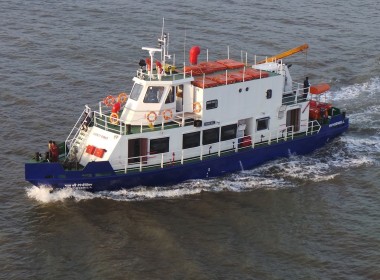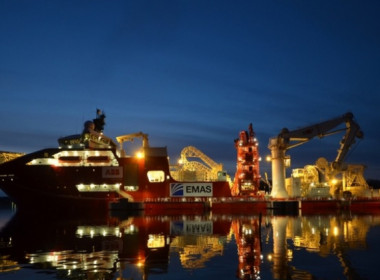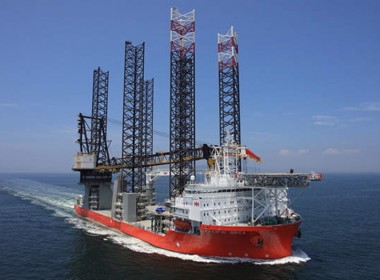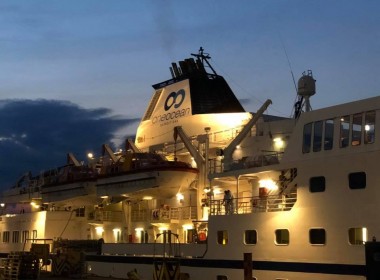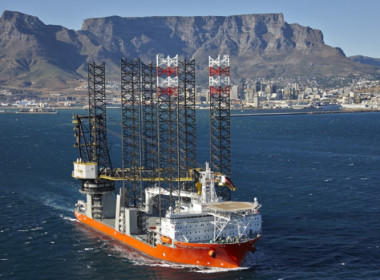VESSEL REFIT | Anuanua Moana – Ex-subsea construction vessel to take on ocean exploration activities off Cook Islands

Moana Minerals (MML), a Cook Islands-based deepwater metals exploration company and wholly owned subsidiary of US private offshore mining firm Ocean Minerals, has begun operating a former subsea construction vessel that has been extensively modified to undertake a range of scientific research activities.
Previously operated by Dutch offshore services company Vroon, the 61-metre vessel formerly known as VOS Satisfaction is now operating as Anuanua Moana after the Maori translation of “Ocean Rainbow,” the name having been selected following a competition among local school students. The vessel is based at Avatiu in the Cook Islands, from where it will support MML’s deepsea polymetallic nodule exploration activities.
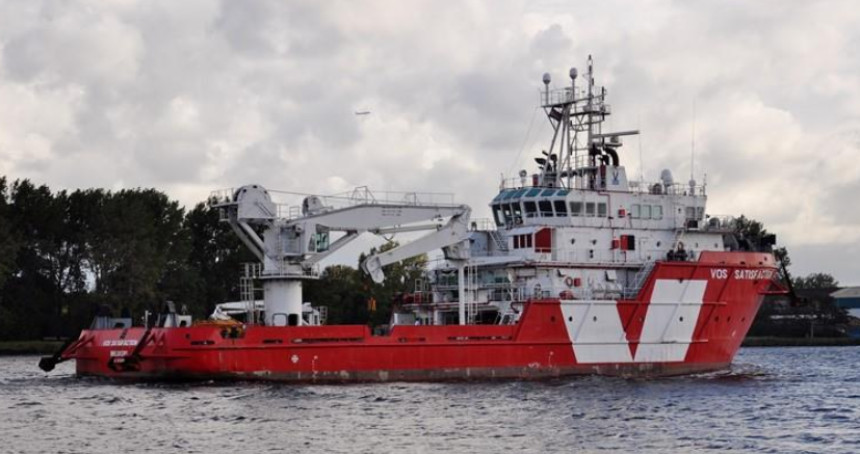
“Our company is the holder of a 23,630-square-kilometre deepsea polymetallic nodule exploration license in the Cook Islands EEZ,” Gary Van Eck, MML’s Senior Vice President for Operations, told Baird Maritime. “Moana Minerals has adopted an ecosystem-based management (EBM) approach as the framework for the upcoming environmental and social impact assessment (ESIA). This approach is focused on conducting several shorter duration scientific, environmental, and resource exploration programs whereby the company can apply adaptive management principles, rather than a limited number of higher-cost, long duration programs.”
To achieve this, MML set about developing a multi-functional exploration vessel that can be permanently based in Rarotonga in the Cook Islands. Discussions with the ESIA team helped MML to define the types, tempos, and operational needs of sampling that would be required over the course of a multi-year exploration program, resulting in what Van Eck said is a vessel that would be capable of conducting deep sea bathymetric survey, seabed, and water column sampling.
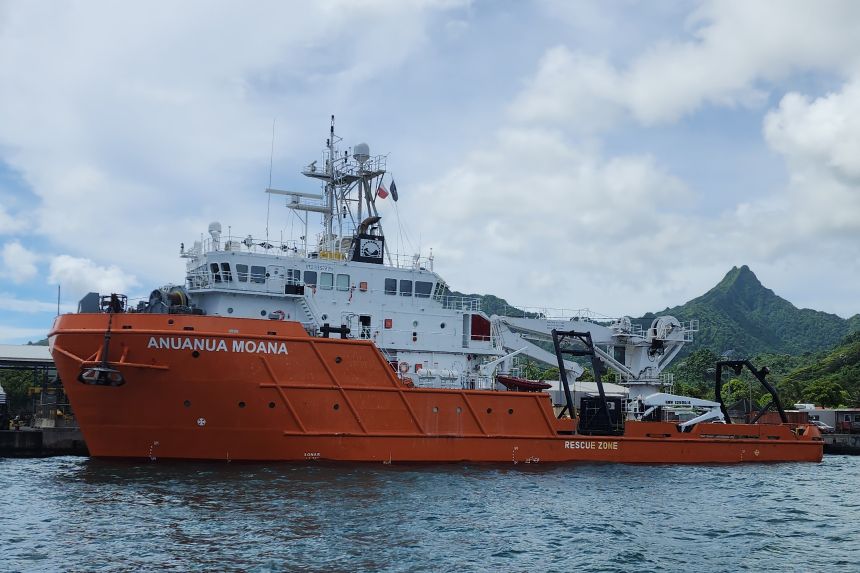
“Such a multi-functional vessel was not available on the market,” added Van Eck, “so MML developed a set of requirements for a multi-functional ‘Swiss Army knife’ deepsea exploration vessel. The company wanted a vessel that provided at least 300 square metres of deck space, provided accommodation of a good standard for at least 20 scientists in addition to crew, and was fitted with a range of lifting gear.”
MML selected VOS Satisfaction, which was then in lay-up in Amsterdam. Design work was specified by MML, and design work packages for the modifications were completed at several locations around the world.
Van Eck said the initial conversion work was completed at Damen Oranjewerf in Amsterdam from July through October 2022. Concurrent with the conversion work in Amsterdam, the vessel underwent a third special survey and reinstatement to Lloyd’s Register. Additional conversion and mobilisation work was completed in Galveston, Texas. The vessel then set sail, through the Panama Canal, for its new homeport of Avatiu, arriving there on February 20 of this year.
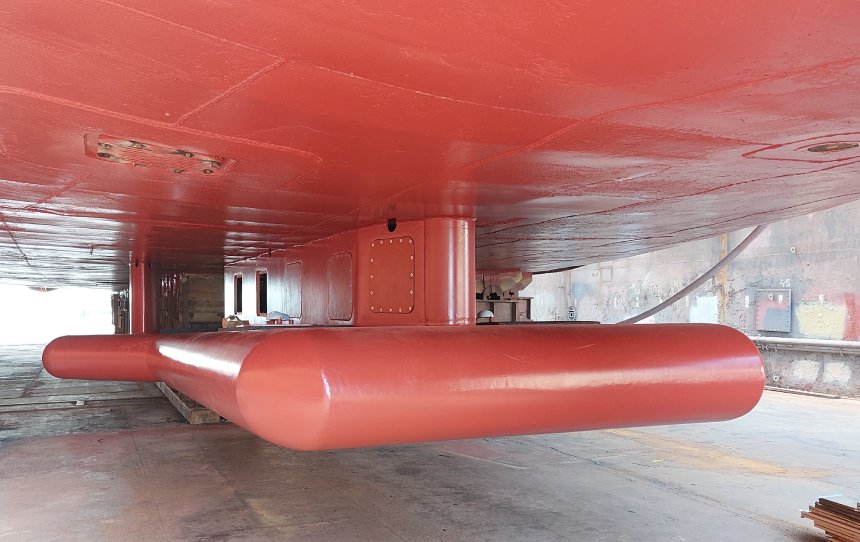
“The key conversion performed in Amsterdam was the installation of the multi-system sonar suite. Kongsberg sonar transducers – including those for deepwater bathymetry, shallow water bathymetry, sub-bottom profiling, and benthic biomass assessments – were installed in a purpose-designed and manufactured gondola mounted to the forward underside section of the hull. The dry side equipment was installed in an interior lower-level cabin repurposed to be the sonar equipment room.”
Van Eck added that the selection of deepwater science equipment was critical to enable regular, timely, and accurate data collection to ensure that the benefits of MML’s EBM approach are realised. As a result, a full range of freefall grabs, benthic sleds, box corers, multi-corers, acoustic hydrophones, and current/density temperature sensors have also been fitted.
“Deploying and recovery of this deepwater science equipment is a key operation the vessel needs to perform,” Van Eck told Baird Maritime. “To ensure MML has redundancy and the ability to perform concurrent operations to maximise use of the vessel, the company chose to fit two deployment systems. Although specific tasks are allocated to each, both systems can deploy most of the sampling equipment that is rope deployed.”
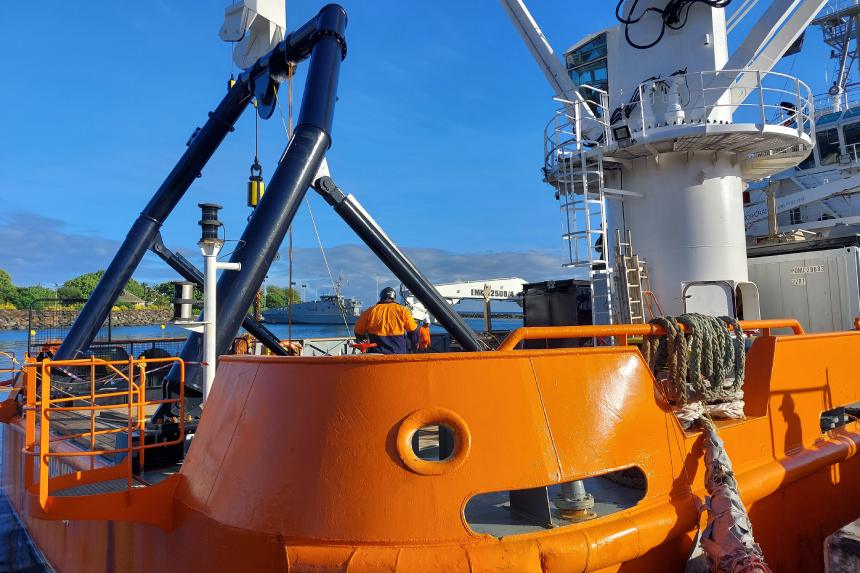
The deployment systems are an aft A-frame (with 10 tonnes SWL) and port A-frame (five tonnes SWL). A level wind winch with 10,000 metres of synthetic rope can service both A-frames, while the port A-frame also has a dedicated winch with 6,000 metres of synthetic fibre rope. The samples collected by these systems and equipment necessitated a carefully constructed sample collection and processing workflow. To satisfy the needs established by this workflow, two permanent containerised biological labs were installed on the main deck, and a removable containerised geological lab was positioned aft of the port A-frame.
The superstructure deck was extended aft to create a mezzanine deck. In addition to holding the auxiliary winch, this deck houses a Comanche inspection-class 6,000-metre rated remotely operated vehicle (ROV) and a launch and recovery system (LARS).
“A 30-tonne knuckle boom crane, a four-tonne knuckle boom crane, and a one-tonne straight boom crane enable self-sufficiency in moving heavy loads around on deck, as well as mobilising and demobilising to and from the quayside, which is especially significant as onshore cranage is limited in the Cook Islands’ capital of Avarua.”
Van Eck said the ship offers accommodation for 42 people, including at least 23 science crew and operators. All cabins are fitted to western standards with a maximum of two persons per cabin.
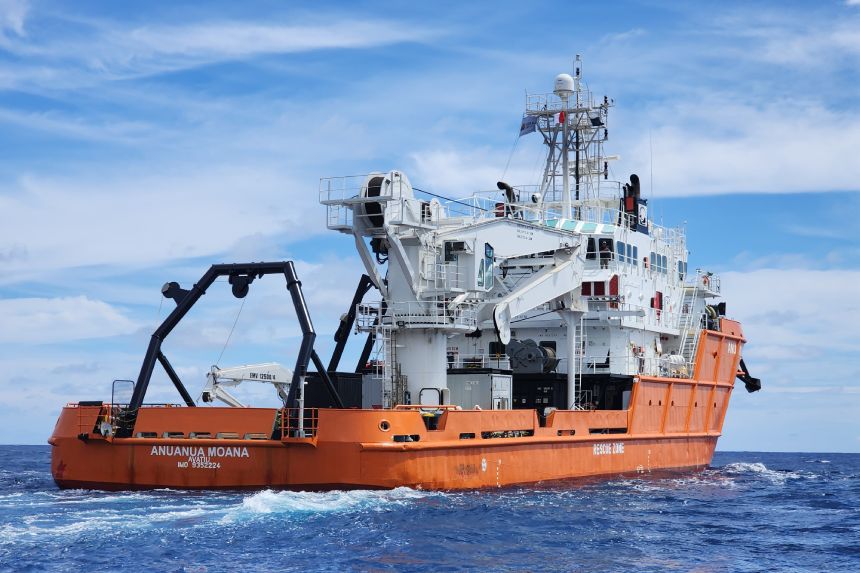
“Anuanua Moana is based in the Cook Islands with the prime purpose of supporting MML’s ESIA program. Secondary purposes include being available to other license holders for the companys’ ESIA programs, as well as additional opportunities not initially identified that provide the Cook Islands with the ability to achieve multiple social and economic objectives at the national and regional level. These include extensive survey of their unexplored EEZ, mapping of the coastal regions, regional biomass surveys to establish fish stock levels, cargo services to outer islands, and ferrying of passengers to remote islands not serviced by air.”
The vessel is also available to other companies, organisations, and NGOs wishing to conduct deepsea environmental research in the Pacific, including the Clarion Clipperton Zone (CCZ). The vessel can undertake the full range of scientific and environmental research, ranging from seismic survey to seabed sampling and water column sampling, with a maximum duration of 50 days at sea.
| Anuanua Moana | |
| SPECIFICATIONS | |
| Type of vessel: | Research vessel |
| Classification: | Lloyd’s Register |
| Port of registry: | Avatiu, Cook Islands |
| Flag: | Cook Islands |
| Owner: | Ocean Minerals, USA |
| Operator: | Moana Minerals, Cook Islands |
| Builder: | Damen Shiprepair Oranjewerf, Netherlands |
| Length overall: | 61 metres |
| Length bp: | 54 metres |
| Beam: | 15.8 metres |
| Draught: | 7.0 metres |
| Deadweight tonnage: | 1,485 |
| Gross tonnage: | 2,163 |
| Net tonnage: | 648 |
| Capacity: | 300 square metres |
| Main engines: | 2 x 1,800 kW |
| Propulsion: | 2 x controllable-pitch propellers |
| Side thrusters: | 800 kW; 500 kW |
| Maximum speed: | 12 knots |
| Cruising speed: | 10 knots |
| Depth sounders: | Kongsberg EM 304; Kongsberg EM 2040; Kongsberg EK80 |
| Dynamic positioning: | Kongsberg |
| Compasses: | 2 x Anschutz |
| GMDSS: | A1; A2; A3 |
| GPS: | Simrad |
| Other electronics: | Kongsberg motion reference unit; Kongsberg hydroacoustic position reference; Kongsberg sub-bottom profiler; iXblue USBL |
| Winches: | Norcrane; Dynacon |
| Anchors: | 2 x Flipper Delta |
| Other equipment installed: | 2 x moonpools |
| Type of fuel: | MGO |
| Fuel capacity: | 550 cubic metres |
| Freshwater capacity: | 442 cubic metres |
| Accommodation: | Cabins |
| Crew: | 19 |
| Passengers: | 23 |
| Operational area: | Cook Islands |



